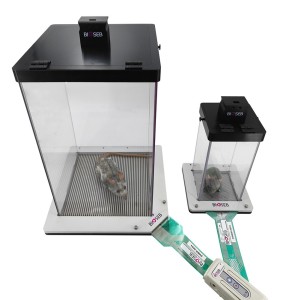Authors
J. Ghilardi, K. Freeman, J. Jimenez-Andrade, K. Coughlin, M. Kaczmarska et al.
Lab
VA Medical Center, One Veterans Drive, Minneapolis, USA.
Journal
Arthritis and Rhumatism
Abstract
OBJECTIVE.: Many forms of arthritis are accompanied by significant chronic joint pain. Here we studied whether there is significant sprouting of sensory and sympathetic nerve fibers in the painful arthritic knee joint and whether nerve growth factor (NGF) drives this pathological reorganization. METHODS.: A painful arthritic knee joint was produced by injection of complete Freund's adjuvant (CFA) into the knee joint of young adult mice. CFA-injected mice were then treated systemically with vehicle or anti-NGF antibody. Pain behaviors were assessed and at 28 days following the initial CFA injection, the knee joints were processed for immunohistochemistry using antibodies raised against calcitonin gene-related peptide (CGRP; sensory nerve fibers), neurofilament 200 kDa (NF200; sensory nerve fibers), growth associated protein-43 (GAP43; sprouted nerve fibers), tyrosine hydroxylase (TH; sympathetic nerve fibers), CD31 (endothelial cells) or CD68 (monocytes/macrophages). RESULTS.: In CFA-injected mice, but not vehicle-injected mice, there was a significant increase in the density of CD68(+) macrophages, CD31(+) blood vessels, CGRP(+) , NF200(+) , GAP43(+) , and TH(+) nerve fibers in the synovium as well as joint pain-related behaviors. Administration of anti-NGF reduced these pain-related behaviors and the ectopic sprouting of nerve fibers, but had no significant effect on the increase in density of CD31(+) blood vessels or CD68(+) macrophages. CONCLUSIONS.: Ectopic sprouting of sensory and sympathetic nerve fibers occurs in the painful arthritic joint and may be involved in the generation and maintenance of arthritic pain.
BIOSEB Instruments Used
Dynamic Weight Bearing 2.0 (BIO-DWB-DUAL)
Source :
http://onlinelibrary.wiley.com/doi/10.1002/art.34385/abstract

 Pain - Thermal Allodynia / Hyperalgesia
Pain - Thermal Allodynia / Hyperalgesia Pain - Spontaneous Pain - Postural Deficit
Pain - Spontaneous Pain - Postural Deficit Pain - Mechanical Allodynia / Hyperalgesia
Pain - Mechanical Allodynia / Hyperalgesia Learning/Memory - Attention - Addiction
Learning/Memory - Attention - Addiction Physiology & Respiratory Research
Physiology & Respiratory Research











![Dynamic Weight Bearing 2.0 – Postural Module [Add-on]](https://bioseb.com/733-home_default/dynamic-weight-bearing-20-add-on-postural-module.jpg)
























 Pain
Pain Central Nervous System (CNS)
Central Nervous System (CNS) Neurodegeneration
Neurodegeneration Sensory system
Sensory system Motor control
Motor control Mood Disorders
Mood Disorders Other disorders
Other disorders Muscular system
Muscular system Joints
Joints Metabolism
Metabolism Cross-disciplinary subjects
Cross-disciplinary subjects CONFERENCES & MEETINGS
CONFERENCES & MEETINGS 
